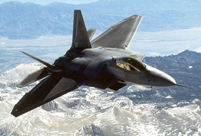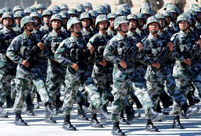 YOG kicks off in Nanjing
YOG kicks off in Nanjing
 Colorful life at Youth Olympic Village of Nanjing 2014 YOG
Colorful life at Youth Olympic Village of Nanjing 2014 YOG
 Royal Taoist temple to open to public
Royal Taoist temple to open to public
 Female soldiers at quake-hit area
Female soldiers at quake-hit area
 Shocking photos of cruel battles in Ukraine
Shocking photos of cruel battles in Ukraine
 Amphibious armored vehicle unit conducts open sea drill
Amphibious armored vehicle unit conducts open sea drill
 Water relay in Henan
Water relay in Henan
 Ethnic culture feasts eyes of travelers
Ethnic culture feasts eyes of travelers
 80 security dogs assembled in Nanjing police dog training base
80 security dogs assembled in Nanjing police dog training base
 Graffiti artists paint on street walls in Xinjiang
Graffiti artists paint on street walls in Xinjiang
On August 19 a US anti-submarine plane and a patrol aircraft flew into air space about 220 kilometers east of China's Hainan Island. A Chinese fighter jet carried our regular identification and verification. During the operation, the Chinese pilot behaved professionally and kept his jet at a safe distance from the US aircraft.
This was not the first time that US aircraft have engaged in close surveillance of China. In the 1990s, after the Cold War, the US strengthened its surveillance of China. As well as space satellite reconnaissance and radio reconnaissance from Japan, US also sent many air patrols and naval vessels to reconnoiter China.
The US has maintained its high frequency and wide-ranging surveillance of China. US military vessels have patrolled the Yellow Sea, East China Sea, and South China Sea. US military ships have paid frequent "visits" to China's coastal waters from Dalian to Hainan Island. Every year the US flies about 500 missions around China, and each flight lasts at least 10 hours.
The US navy has made significant deployments of its forces to keep an eye on China, using a rigorous and extensive surveillance network. Starting from the mid-1990s, the US navy has sent all kinds of vessels including missile surveillance ships, radio surveillance ships, and underwater acoustics detectors to China's coastal areas. About 60 percent of America's 50 nuclear submarines are deployed in the Pacific arena, most of which are carrying out close surveillance of China's coastal waters.
The US air force also deployed numerous surveillance planes such as the SR-71, RC-135 reconnaissance aircraft, and Global Hawk - a UAV (unmanned aerial vehicle) surveillance aircraft. These planes can take pictures and provide imagery support, and can even perform video, electronic, and optical surveillance. Through these high-tech vehicles the US can not only intercept radio communications from hundreds of miles away, but also obtain sensitive political information from other countries, locate the sources, and collect intelligence. The US can therefore familiarize itself with the deployments of foreign military, with coastal topography, and even with policy shifts in other countries. In the case of war, the US army would enjoy a definite advantage through all this valuable information.
This frequent close surveillance has threatened China and resulted in serious incidents in both air and marine security. The worst occurred on April 1st, 2001, when a US EP-3 ARIES II signals intelligence aircraft amde a sudden air turn that resulted in a collision with a PLAN (People's Liberation Army Navy) J-8II interceptor fighter jet and the death of the PRC pilot.
In recent years, China has pointed out on many occasions that the massive and frequent close surveillance of the US army in China is one of the three obstacles in the way of developing China-US relationship, and a major cause of incidents in the air and marine security of both countries.
Everyone, from the president of the US to the field commanders in the US military have all claimed in public that the US does not consider China as its enemy, and that the Asia-Pacific rebalancing strategy is not targeted at China. So why does the US still maintain such frequent surveillance activities in China? The United States should provide a reasonable explanation to the public. Only when the US abides by international law and stops its close surveillance of China can the two countries establish the foundations to build better relations.
This article is edited and translated from 《美應(yīng)遵守國際法停止對華偵察》, source: People's Daily, author: Zhang Junshe
 Special holidays
Special holidays World's top 10 fighters
World's top 10 fighters 'Stewardesses' serve in hospital
'Stewardesses' serve in hospital Beautiful night scenery of Nanjing
Beautiful night scenery of Nanjing ‘Peace Mission -2014’ joint anti-terror military exercise kicks off in China
‘Peace Mission -2014’ joint anti-terror military exercise kicks off in China Eye-catching guides at the opening ceremony of YOG in Nanjing
Eye-catching guides at the opening ceremony of YOG in Nanjing A female missile launch company of PLA
A female missile launch company of PLA China, the U.S., Britain and the Soviet Union call for Japan's unconditional surrender
China, the U.S., Britain and the Soviet Union call for Japan's unconditional surrender The biggest duty-free store of the world
The biggest duty-free store of the world Volunteers bid farewell to YOG
Volunteers bid farewell to YOG More police dogs join anti-terror campaign in Inner Mongolia
More police dogs join anti-terror campaign in Inner Mongolia Picturesque Dayilan Manchu village in NE China
Picturesque Dayilan Manchu village in NE China Athletes experience the charm of Chinese traditional opera in Nanjing
Athletes experience the charm of Chinese traditional opera in Nanjing Contestants for Miss Bikini World experience Chinese traditional culture
Contestants for Miss Bikini World experience Chinese traditional cultureDay|Week|Month